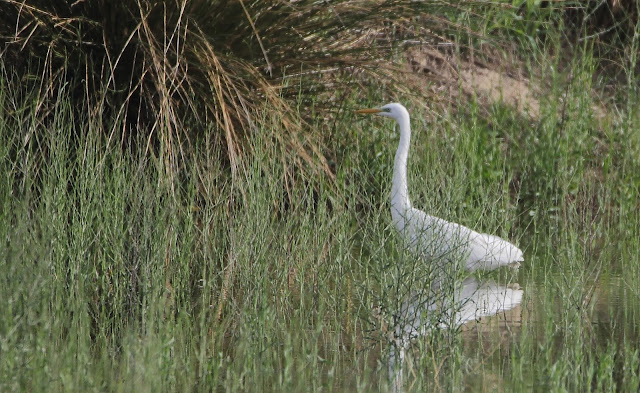En el siguiente enlace podéis ver nuestros próximos viajes nacionales y al extranjero. Espero que os gusten.
Próximos viajes. Next trips.
Hola una vez más.
Hello again.
En esta entrada os muestro algunas aves que vimos en una visita reciente al Parque Regional del Sureste de la Comunidad de Madrid.
In this post I show you some Birds that we have seen in a recent visit to the Parque Regional del Sureste of the Community of Madrid.
El objetivo principal era fotografiar a los bonitos bengalíes rojos (Amandava
amandava) que son una especie invasora y que se ha establecido desde hace muchos años en esta parte de la Comunidad de Madrid. Esta especie es originaria de Asia y debido a escapes de colecciones y a su gran adaptabilidad han prosperado en bastantes lugares de la geografía Española.
The main target was to photograph the beautiful Rred Avadavat which are an invasive species that has been established for many years in this part of the Community of Madrid. This species is native of Asia and due to scapes from collections and their great adaptability have prospered in many places of the Spanish geography.
El motivo de ir en esta época es que su ciclo reproductor sigue coincidiendo con el tiempo de los Monzones en su lugar de origen que es cuando llueve y se reproducen. De finales de julio hasta finales de noviembre los macho están muy activos y en plumaje nupcial por lo que es más fácil localizarlos y fotografiarlos.
The reason of going at this time is that their reproductive cycle continues to coincide with the time of the Monsoons at their place of origin that is when it rains and they reproduce. From late July to late November males are very active and in breeding plumage so it is easier to spot and photograph them.
El tiempo fue bueno y no demasiado caluroso pues no hizo más de 33 grados centígrados.
The weather was good and not too hot as it did not exceed 33 degrees Celsius.
Además de los bengalíes rojos (Amandava amandava) también vimos otras aves como:
In addition to the Red Avadavats we also saw other Birds like:
Gracilla bueyera (Bubulcus
ibis).
Cattle
Egret.
Había muchas golondrinas comunes (Hirundo
rustica). En la foto un joven.
There were many Barn Swallows. The photo shows a Juvenile.
Cigüeñuela común (Himantopus
himantopus).
Black-winged
Stilt.
Cistícola buitrón (Cisticola
juncidis).
Zitting
Cisticola.
Garceta grande (Egretta alba).
Great
White Egret.
Este joven de pájaro moscón (Remiz
pendulinus) no quiso enseñarnos su cara.
This juvenile of Penduline Tit did not want to show us its face.
Macho de ánade azulón (Anas
platyrhynchos) mudando ya a su bonito plumaje de invierno.
Mallard male molting already into his beautiful winter plumage.
Sin embargo esta hembra estaba todavía cuidando de su prole.
However this female was still caring for her offspring.
Somormujo lavanco (Podiceps
cristatus).
Great
Crested Grebe.
Garza imperial (Ardea
purpurea).
Purple
Heron.
Esta otra parece que lleva en su pico un macho de tritón común (Lissotriton vulgaris).
This other one seems that it carries in its peak a male of Smooth Newt.
Hembra de porrón europeo (Aythya
ferina).
Female of Common
Pochard.
Los girasoles (Helianthus annuus) estaban en flor.
Sunflowers were in bloom.
Avión zapador (Riparia riparia).
Sand
Martin.
Calamón común (Porphyrio
porphyrio).
Purple
Swamp-hen.
Macho de libélula de flecha roja (Sympetrum sanguineum).
Male of Ruddy Darter.
Hembra.
Female.
Chorlitejo chico (Charadrius
dubius).
Little
Ringed Plover.
Gorrión moruno (Passer
hispaniolensis) macho.
Male of Spanish
Sparrow.
Cigüeñas blancas (Ciconia
ciconia).
White
Storks.
Zampullín común (Tachybaptus
ruficollis).
Little
Grebe.
Andarríos grande (Tringa
ochropus).
Green
Sandpiper.
Combatientes (Philomachus
pugnax).
Ruffs.
Andarríos bastardo (Tringa
glareola).
Wood Sandpiper.
Avefría europea (Vanellus
vanellus).
Northern
Lapwing.
Joven de alcaudón común (Lanius
senator).
Juvenile of Woodchat
Shrike.
Gallineta común (Gallinula
chloropus).
Moorhen.
Focha común (Fulica
atra).
Common
Coot.
Y el objetivo de la excursión el bengalí rojo (Amandava
amandava). vimos muchos machos y algunos bastante cerca.
And the target of the tour that is the Red Avadavat. We saw many males and some relatively close.
Los machos son preciosos.
Males are striking.
Este aun no tenia todo el plumaje reproductor.
This still did not have all the breeding plumage.
Machos recolectando material para los nidos.
Males collecting material for their nests.
Vimos muy pocas hembras. La mayoría debían estar incubando. El dimorfismo sexual en esta especie es muy aparente. Las hembras son mucho más discretas.
We saw very few females. Most had to be incubating. The sexual dimorphism in this specie is notorious. Females are much colourless.
Y con esta foto de una hembra me despido de todos vosotros hasta la siguiente entrada. Hasta pronto.
And with this photo of a female I say goodbye to all of you until the next post. See you soon.

















































































































